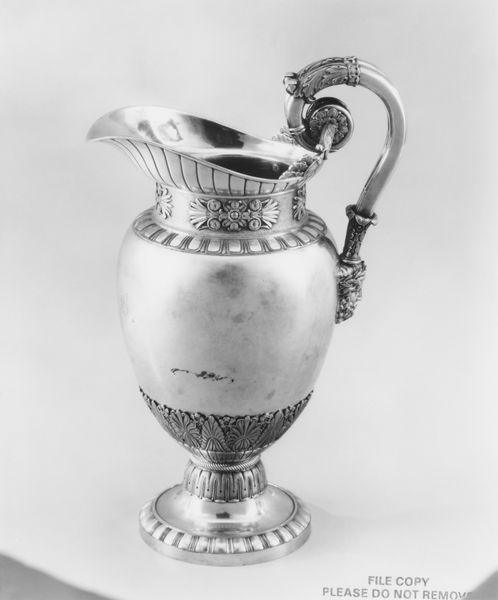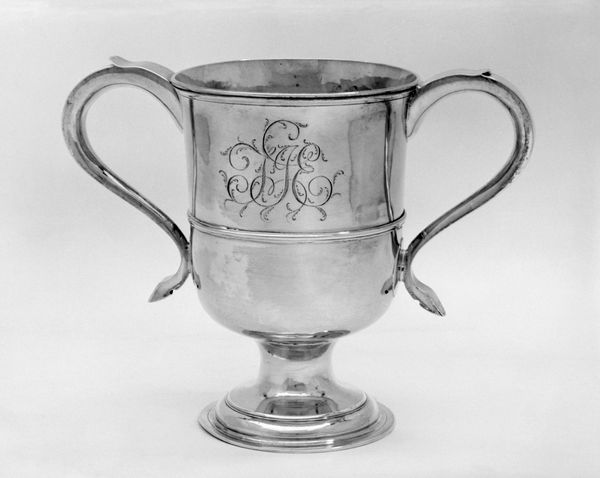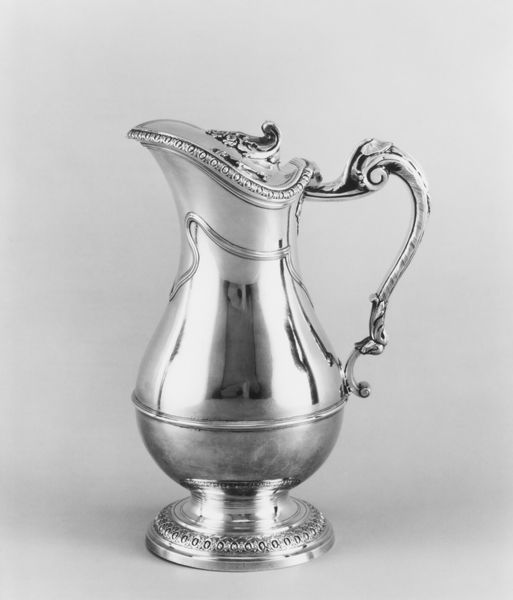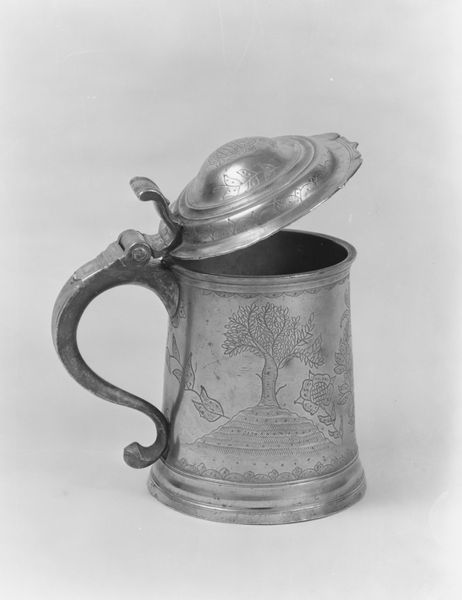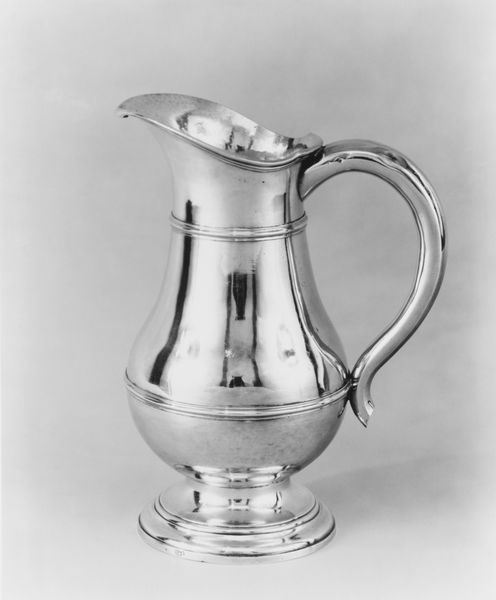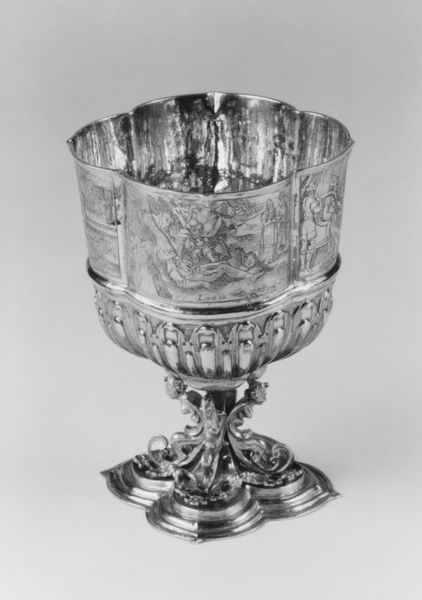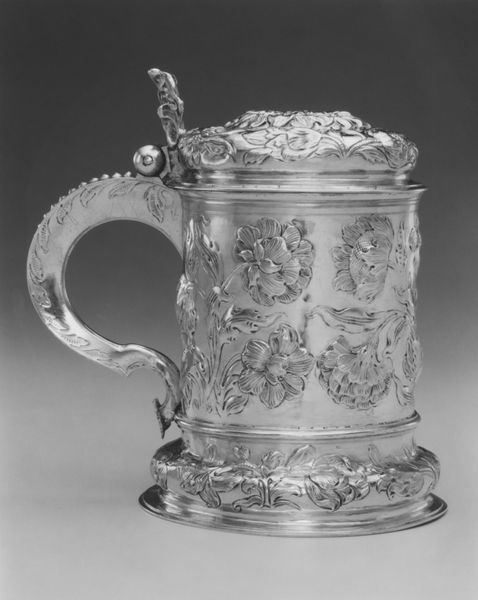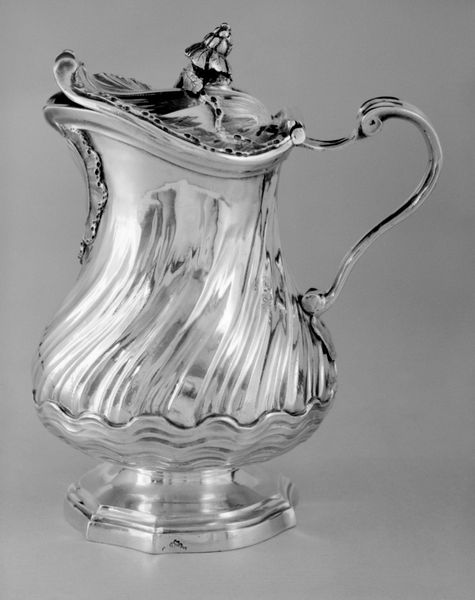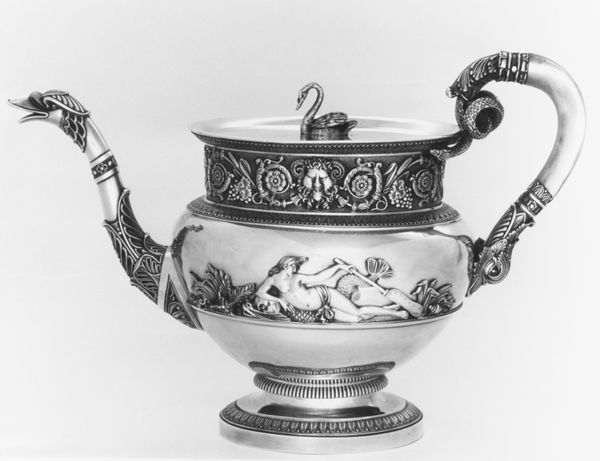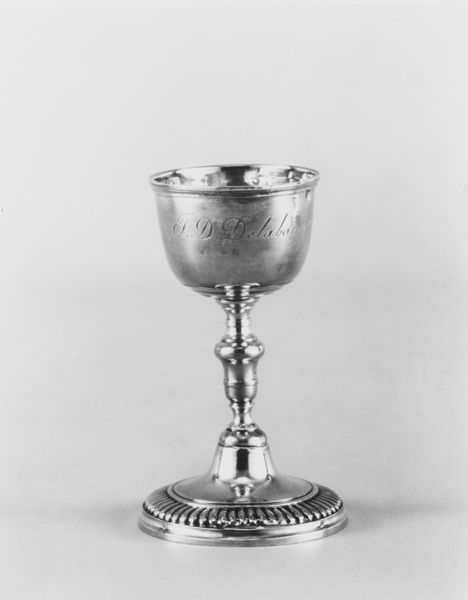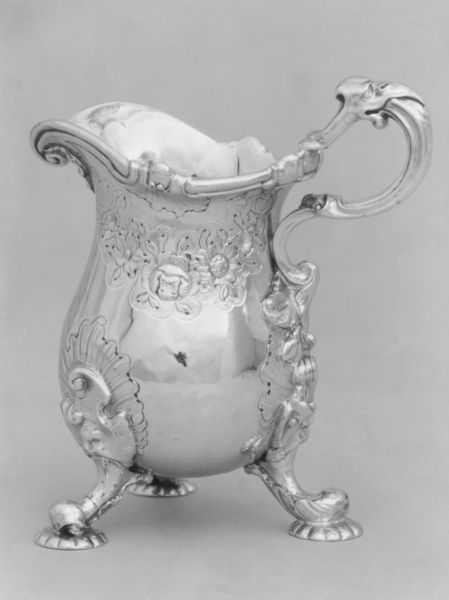
silver, sculpture
#
silver
#
baroque
#
sculpture
#
decorative-art
Dimensions: Overall: 9 3/16 × 9 5/16 in. (23.3 × 23.7 cm)
Copyright: Public Domain
Curator: This exquisitely crafted silver ewer was made in 1734 by Christoffel Radijs, and it resides here at the Metropolitan Museum of Art. Its Baroque style is undeniable. Editor: Yes, it practically screams opulence, doesn’t it? Looking at the crisp monochrome, it almost feels like a still from a movie about Dutch high society. Curator: Its materiality certainly speaks to the socio-economic dynamics of the period. Silver wasn't exactly a readily available material. What details do you see that support this? Editor: Well, beyond just the gleam of the silver itself, notice the chased decorations on the upper register and the handle. The patterns mimic textiles of the era, which also indicated privilege and wealth. What was this ewer likely used for, in your opinion? Curator: Likely for serving water or wine at elaborate dinners. Every element, from the proportion of the body to the curvature of the handle, would have been carefully considered to both demonstrate the owner’s wealth and enhance the ritual of dining. Radijs wasn't merely crafting a container, he was engineering social spectacle. Editor: Exactly. And while we can admire the artistry and precision, it’s equally important to acknowledge that objects like this were commissioned during a period of immense colonial exploitation. The wealth displayed in this ewer likely came at the cost of countless people. Curator: Absolutely, reflecting on those labor dynamics is a valid and essential step. The extraction and processing of silver often relied on exploited labor. Editor: Thinking about its display today in a museum context also interests me. How does seeing something so intertwined with privilege impact contemporary viewers, particularly those from marginalized communities? Curator: That's an incisive question, prompting viewers to reflect on history. The ewer offers insights into not just the material conditions and craft of the time but also its moral and social complexities. Editor: Yes, seeing an object of luxury in the museum, separated from its original context, offers space for crucial re-evaluation and awareness. Curator: Agreed. It invites an interrogation of the systems that brought such beauty – and inequality – into being.
Comments
No comments
Be the first to comment and join the conversation on the ultimate creative platform.
